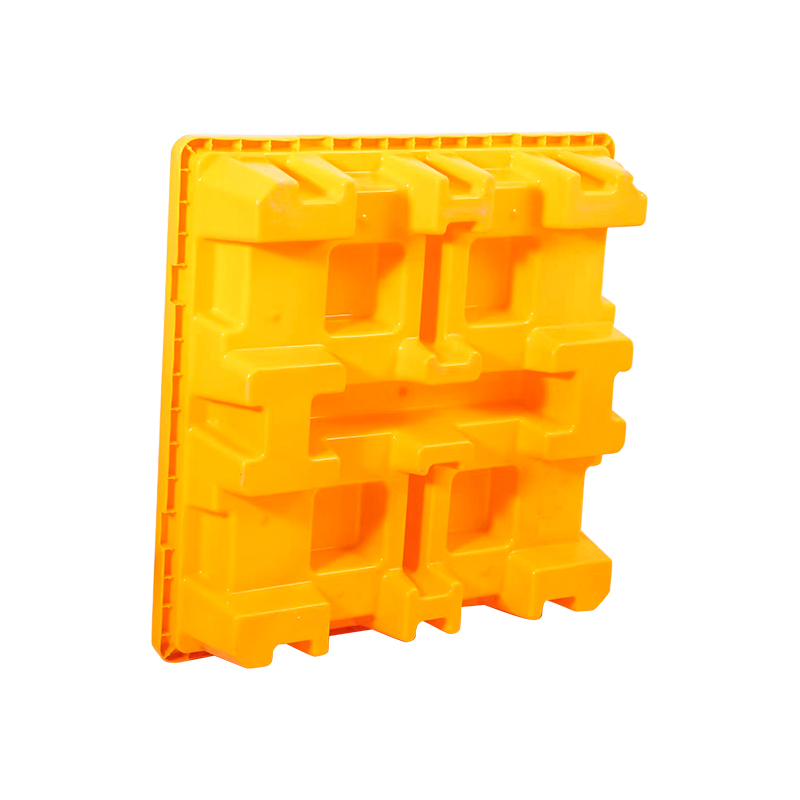
The Materials Used in Plastic Fruit Storage Molds
In the realm of food storage, especially for delicate and perishable items like fruits, the choice of storage containers plays a pivotal role in preserving freshness and extending shelf life. Plastic Fruit Storage Molds have emerged as a popular solution, offering convenience and practicality.
Food-Grade Polypropylene:
One of the primary materials used in the production of Plastic Fruit Storage Molds is food-grade polypropylene. This polymer is widely recognized for its safety in contact with food and is approved by regulatory bodies such as the U.S. Food and Drug Administration (FDA). Food-grade polypropylene ensures that the container does not impart any harmful substances or odors to the stored fruits.
Polypropylene also boasts excellent resistance to moisture, chemicals, and temperature variations, making it a reliable choice for preserving the quality of fruits over an extended period.
Transparent PET (Polyethylene Terephthalate):
The transparency of Plastic Fruit Storage Molds is often achieved using PET, a clear and lightweight plastic. This material allows users to easily identify the contents of the container without the need to open it, promoting efficient organization and reducing the likelihood of unnecessary exposure to air.
PET is valued for its clarity, impact resistance, and recyclability, making it a sustainable choice for food packaging. Its ability to resist odors and flavors ensures that the stored fruits retain their natural taste and aroma.
BPA-Free Materials:
The concern over Bisphenol A (BPA), a chemical used in the production of certain plastics, has led to the widespread adoption of BPA-free materials in food containers, including Plastic Fruit Storage Molds. BPA is known for its potential health risks, and the use of BPA-free materials ensures that the containers are free from this controversial substance.
Opting for BPA-free Plastic Fruit Storage Molds provides consumers with peace of mind, knowing that their food storage containers are designed with health and safety in mind.
High-Quality Sealants:
Preserving the freshness of fruits requires an airtight seal, and the materials used in the sealants of Plastic Fruit Storage Molds are crucial in achieving this goal. High-quality, food-grade silicone is commonly employed in the seals to create a tight barrier against air and moisture, preventing premature spoilage of fruits.
Silicone sealants are known for their flexibility, durability, and resistance to temperature. The elasticity of silicone ensures a snug fit, effectively locking in the freshness of the stored fruits.
UV-Resistant Additives:
In situations where Plastic Fruit Storage Molds are exposed to sunlight or artificial light, UV-resistant additives are often incorporated into the materials. These additives protect the plastic from the harmful effects of ultraviolet (UV) radiation, preventing discoloration and degradation over time.
UV-resistant Plastic Fruit Storage Molds retain their clarity and structural integrity, ensuring that the container's aesthetics and functionality remain intact even with prolonged exposure to light.
Durable Copolymers:
Copolymers, which are composed of two or more different monomers, are frequently used in Plastic Fruit Storage Molds to enhance durability and impact resistance. The incorporation of copolymers reinforces the structural integrity of the containers, making them more robust and less prone to cracking or breaking, even in demanding environments such as refrigerators or freezers.
The use of durable copolymers ensures that Plastic Fruit Storage Molds can withstand the rigors of everyday use without compromising their ability to protect and preserve fruits.
Recyclable and Environmentally Friendly Materials:
As sustainability becomes an increasingly important consideration, many manufacturers opt for recyclable and environmentally friendly materials in the production of Plastic Fruit Storage Molds. Recycling symbols, such as those indicating PET or polypropylene, are commonly found on these containers, encouraging responsible disposal practices.
The use of recyclable materials aligns with efforts to reduce environmental impact and promotes a circular economy where plastic materials can be reused or repurposed.
As technology and consumer preferences evolve, we can anticipate ongoing innovations in the materials and design of Plastic Fruit Storage Molds, ensuring they continue to meet higher standards of quality, safety, and sustainability. Whether in the kitchen, refrigerator or on the go, Plastic Fruit Storage Molds play a crucial role in keeping fruits fresh and accessible, providing a convenient solution for households and businesses alike.

 English
English  русский
русский Español
Español






